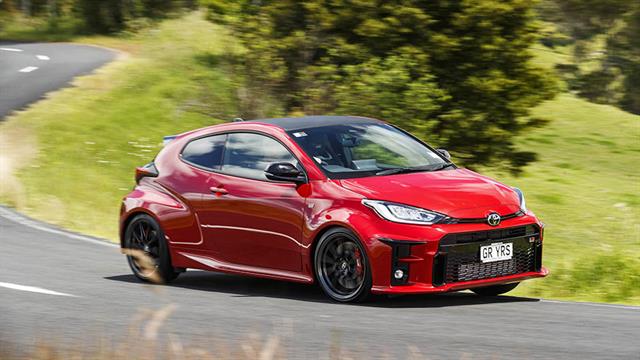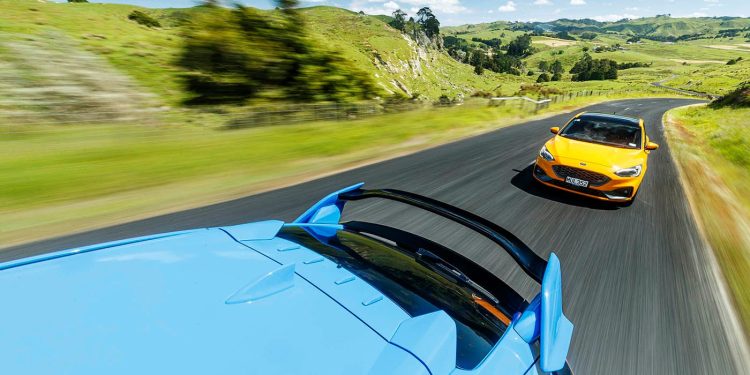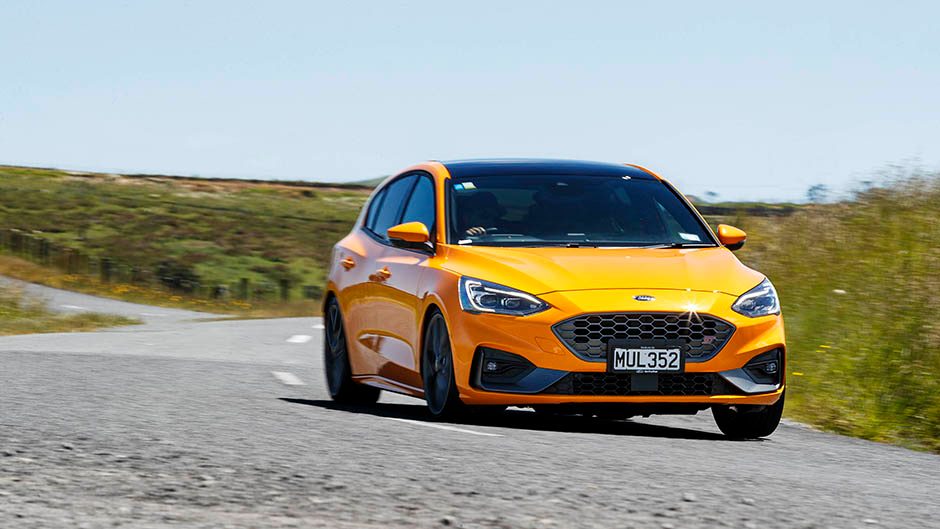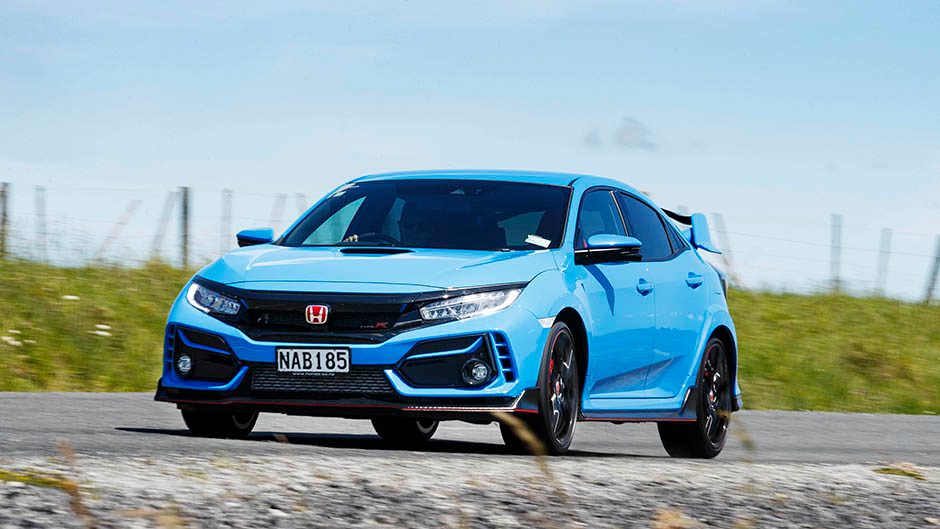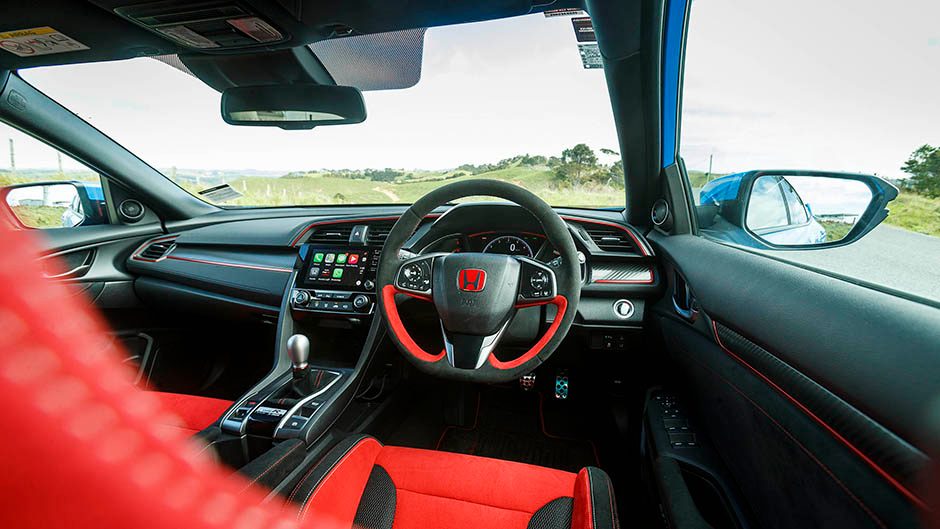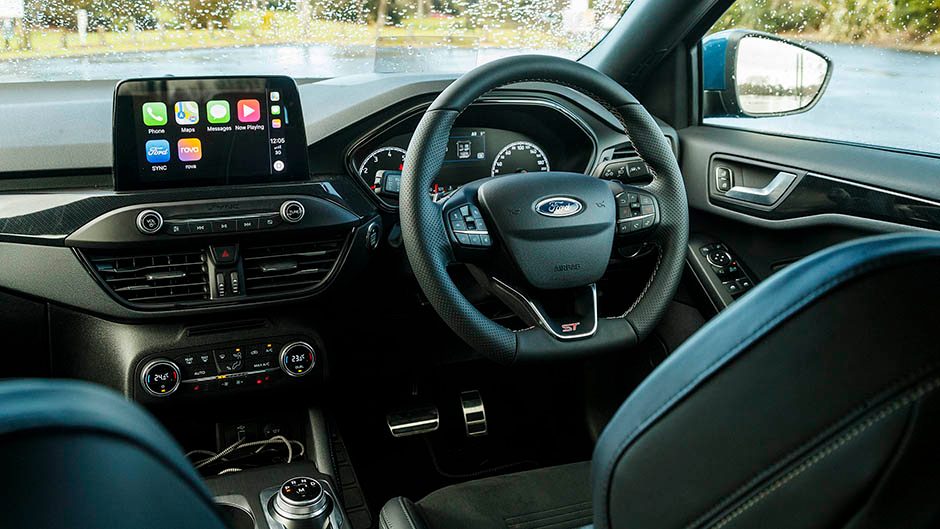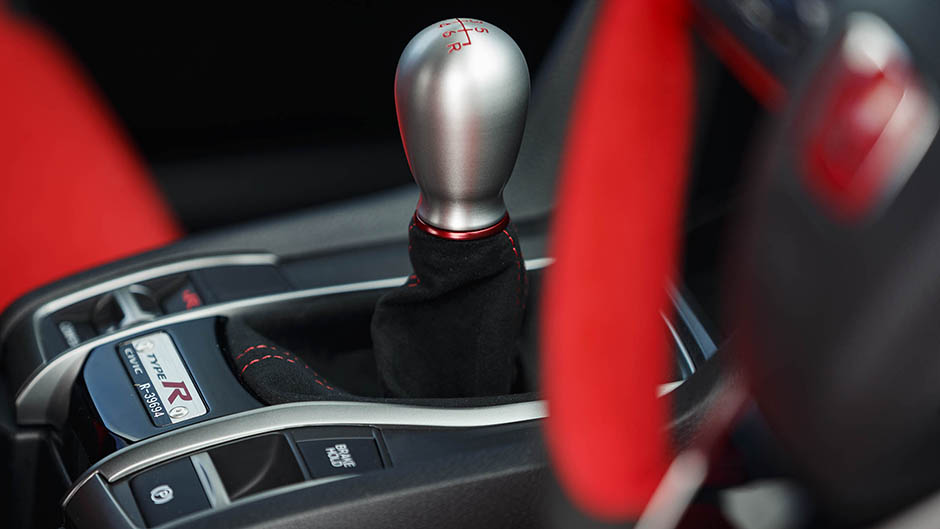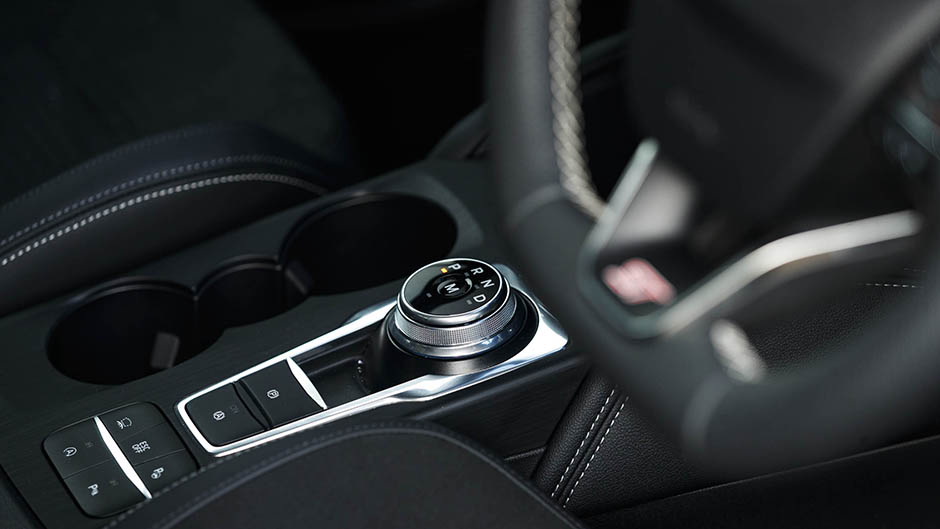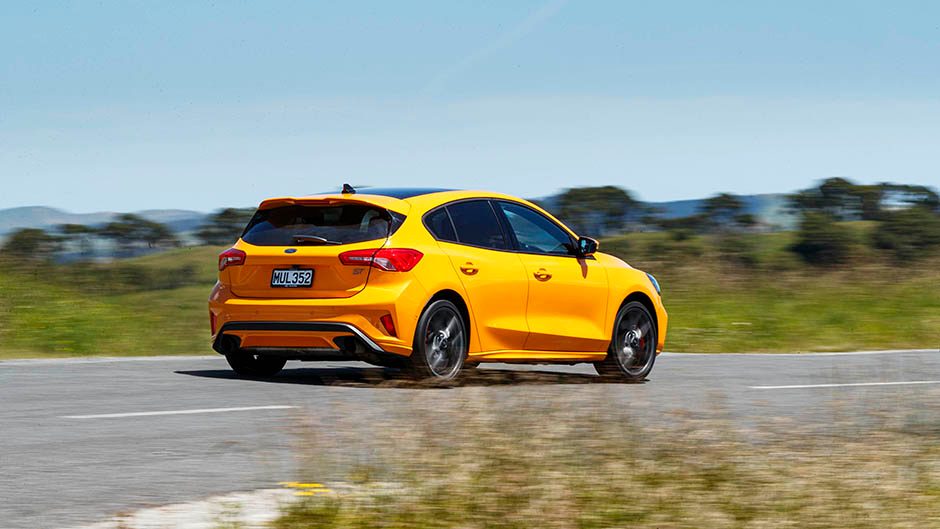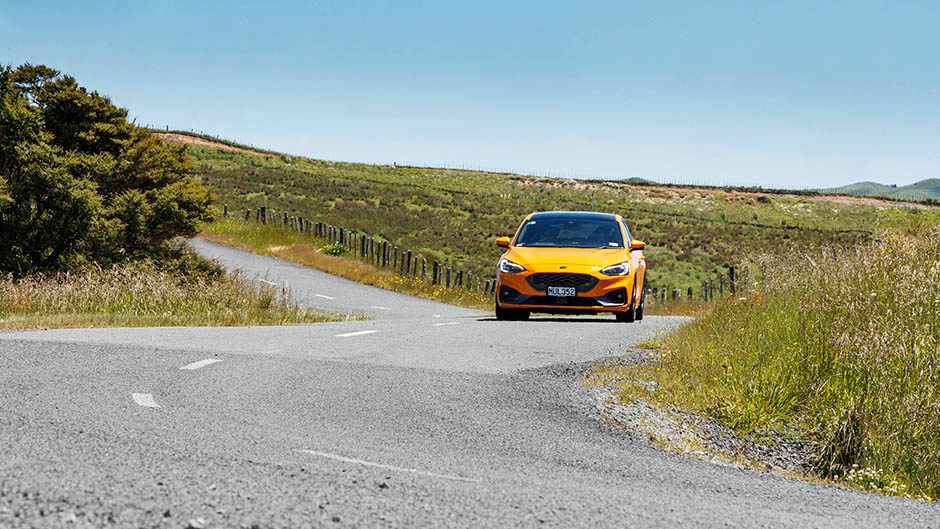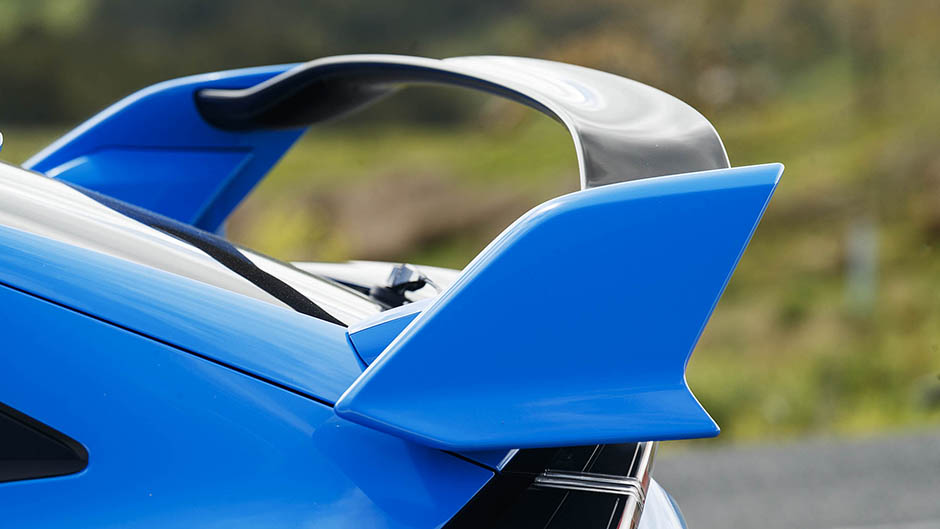2021 Ford Focus ST vs Honda Civic Type R comparison
Words Kyle Cassidy | Photos Tom Gasnier
Racy five doors are a fave around the NZ Autocar office, often picking up our performance car of the year award with their mix of driver appeal, value and practicality. Here we compare two of the best front drivers in the Type R and ST.
Hot hatches are the practical performers. We like ’em as they’re relatively affordable and you can explore more of their ultimate potential. Ford’s Focus ST was one of the more exciting arrivals this year. It replaces two cars, its direct predecessor and the mighty Focus RS. Blame Euro emissions standards for the passing of the latter. But it sees the ST as a genuinely stonking competitor now, more powerful and with the means to make it stick. Plus it’s got an auto trans, giving it a better chance of selling.
Not that a manual-only policy has made it hard for Honda to move a few hundred examples of its cracking Civic Type R. It’s a weapons-grade offering and as it has recently been refined we got it back to truly test the mettle of the ST. Both front drivers are turbocharged hot hatch hoonery setting you back circa $60k, but which is the one? And how do they compare with Toyota’s new GR Yaris? Read on.
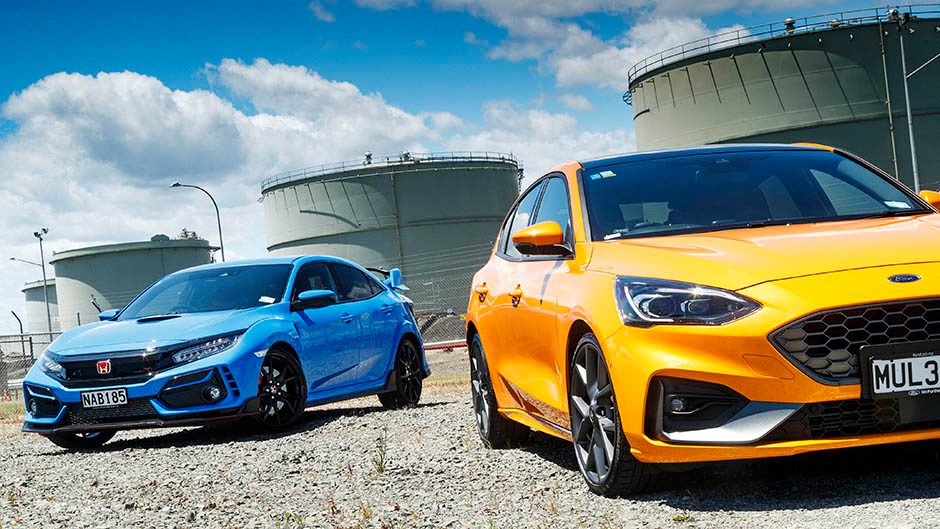
Familiar formulas
The Type R has been buffed for 2021 with reprofiled bumpers, a bigger grille (improved cooling for track days), a redesigned front spoiler (to compensate for the change in aeros resulting from said grille), an Alcantara wrapped steering wheel (easier to grip with your racing gloves) and a counterweighted shift knob (for a more precise action).
The adaptive dampers now react faster thanks to improved software, which helps with previous ride issues, while the bushes have been revised for the sake of suspension stability. New ball joints sharpen steering precision further while two-piece rotors up front are lighter and Honda has improved the brake pedal feel. The 2.0-litre VTEC turbo summons 228kW and there’s 400Nm from 2500-4500rpm. A helical-type limited-slip diff helps it stick the mumbo and the only trans is a six-speed manual. For 2021, the Type R costs $62,990.
The hottest Focus you could call half-RSed, as it uses a development of the 2.3-litre engine from the old RS, but it only drives the front wheels. Power rates at 206kW with 420Nm of torque from 3000-4000rpm. Helping ground it all is Borg Warner’s ‘eLSD tech’ with hydraulically activated clutches to direct the flow of torque actively between the wheels. They say it’s faster acting than a mechanical LSD while it can pre-empt the distribution by tapping into all the drive sensors. The only trans offered in NZ is a seven-speed, torque-convertor auto. Interestingly, the ST uses the same springs as a regular Focus, but it’s lower and gains constantly adaptive dampers. It runs a $59,990 sticker price.
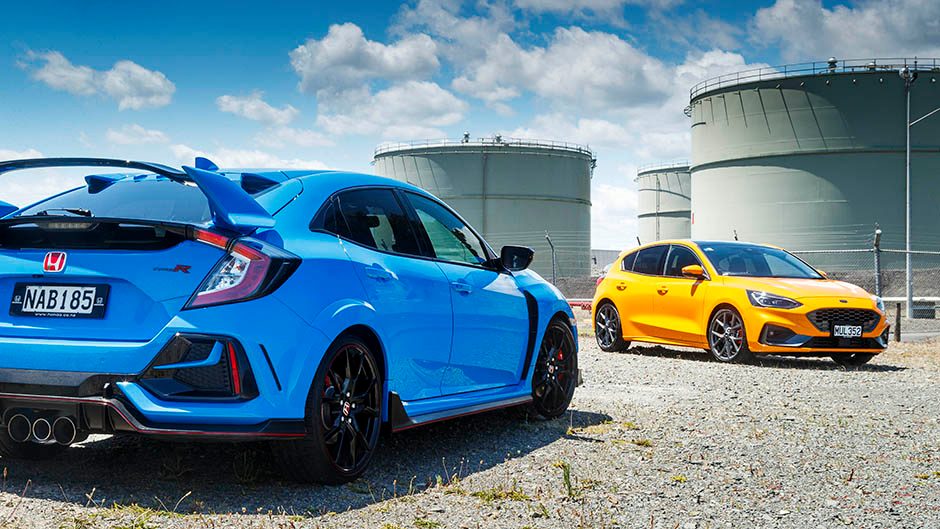
The better corner tamer?
Spoiler alert, it’s still the Type R. Though we’re well familiar with its abilities, it never fails to impress. It’s clinical yet engaging. Its innate stability leads to massive corner grip. It holds on grimly, like Trump to the oval office, you can’t prise its grip from the perfect cornering line. You think you’re working it, and yet when the corner tightens, the Type R has more to give, tucking in calmly. But it can change directions swiftly too. It flows through a series of left, right, lefts, the rear secure, the front glued on target. And the steering precision is complemented with decent feel.
Its R mode is too ragged for the road where it’s suddenly interested in following the geography of the blacktop, especially under power. Sport is better, the steering not so weighted, the ride more compliant but controlled. The Civic has few troubles getting gone, the diff working its charms while there’s just the odd intervention from the traction control. It’s quick when whipped. This VTEC shows life at 2000rpm, but really ‘kicks in’ from 4000 and will race to seven as the shift lights start flashing. The top end power is unique amongst 2.0-litre turbos, most feeling stretched when asked to spin purposefully past six.
The box action is endearing. It’s hard to miss a gear, especially with the rev match action; just poke it in the general direction and you’ll slot it. Like the clutch, the brake pedal has a deliberate action, while the stoppers work better the harder you step on it. And the Type R is rock solid stable under braking, even when the car is not as straight as it should be. The R does roar, from the tyres that is, while the engine note is flat, despite Honda adding Active Sound Control which is said to enhance the noise, yet doesn’t really.
ST still entertains
Jumping out of the Type R and straight into the ST reveals the Ford to be a different sort of entertainer. Where the Type R is engineered for precision, poise and the ultimate lap, the ST is more of a larrikin. It’s not as polished, but has its charms. It’s mighty quick yet not as rapid as the R, and just can’t match it for cornering stick. The rear end can get playful too. Where the Civic’s is stuck firm like a religious, gun toting southern conservative, the ST’s will roll slightly to neutralise the push, enabling the front tyres to hold the line longer. It requires the odd mid-corner steering adjustment, yet there’s no danger of looping it out. It’s nimble, turning quickly, the steering well weighted and feelsome, but with a mild self-centring to the action. It’s a smidge bumpier in its Sport mode damper setting than the Honda and when it hits the bigger bumps, doesn’t absorb them with the refinement of the Japanese machine. There’s nothing wrong with the way it puts the power down though; you can get on the gas hard and fast out of bends and it will grip. Like the Honda, there’s a bit of tugging at the wheel, but it does tramline more.
The Type R engine revs faster, but this pulls just as heartily, the extra cubes helping bulk out the midrange. The Honda’s manual trans also gives it a more direct, responsive in-gear feel compared with the ST’s auto. This isn’t blessed with the sportiest of protocols, so the manual mode can be the go. With seven cogs, there are no gaps.
The brakes have the better initial bite, but you need to be as straight as possible when hitting them hard, or that tail will wander. The tyre roar isn’t such an issue, and you can hear the engine, a gruff albeit synthesised note.
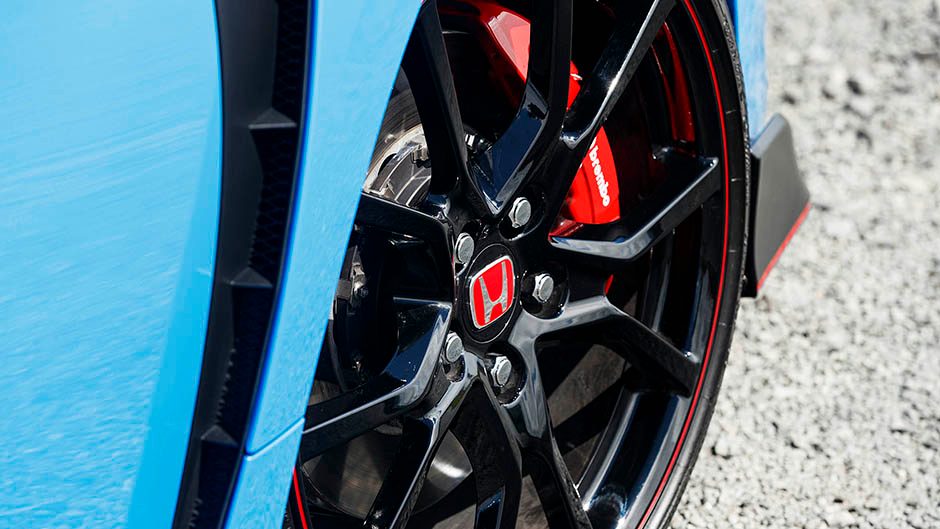
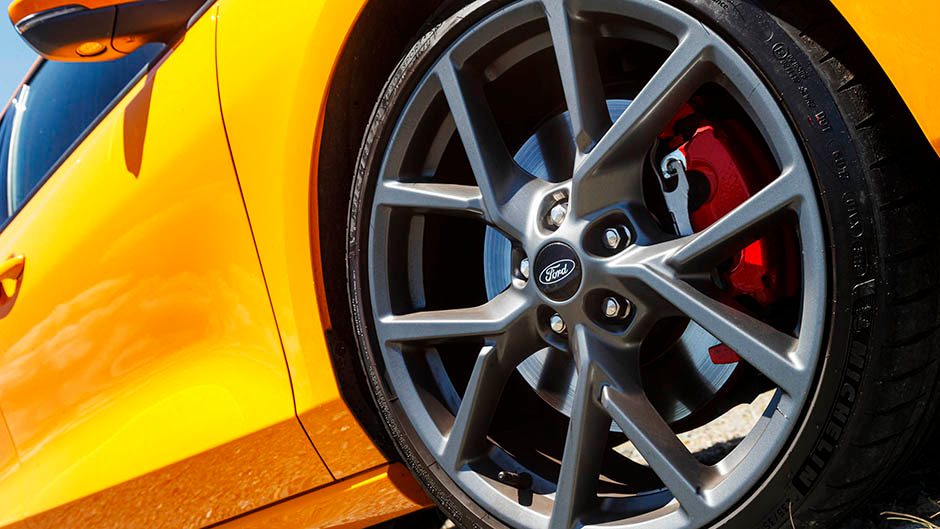
Practical performers
While entertaining driver’s cars, both are easy to live with. The Type R looks racy, hard and harsh, but it’s still a Civic underneath the race suit. The visuals are arresting, offputting for some, and in this lurid blue hue, people just assume you’re looking for mischief. The ST is almost incognito next to it.
The Civic has the lumpier ride until you realise that Sport is its default mode. A quick switch to Comfort delivers civility. Both have a sporty ride, they are hot hatches, although the Type R is always louder on coarse chip surfaces. The steering effort is minimal too in everyday going, both with quick racks, though the Type R has a large turning circle to contend with.
Neither has any lingering lag issues and stout torque gives them the ability to get ahead of the pack when need be. As long as the character next to you doesn’t have AWD. Both will struggle to plant it all if you go bananas. For the record the Focus is easier to coax away from stopped, helping it pip the Type R to 100km/h, but the Civic soon turns the tables, being much quicker over the 80-120km/h sprint. The Honda drinks slightly less, averaging 9.5L/100km to the ST’s 10.2.
Both are roomy in the rear, the Civic with a smidge more but it only has two seat belts. It has the larger boot also. The Honda’s manual trans is no biggie, the clutch is easy, and with all its torque, you can skip shift the gears while it pulls fifth from 40km/h easy. The Type R even has adaptive cruise, though isn’t much help in heavy traffic. Unlike the ST, which has stop and go functionality, and a healthier specification with a charge pad, sunroof, self parking, head-up display and a far superior infotainment system, all of which gives it a value leg-up.
Which suits you better?
We’d be happy with either of these, though the Type R is the superior driver’s car, still. And it’s a manual. The ST is better specified, cheaper and the auto will help give it the nod from others in the household. Its five-seater status might sway things too.
Holy moly
And how does the GR Yaris compare? It’s a different beast, smaller and all-wheel drive-ier, it manages to split the difference between the two. It has tenacious grip but an underlying playful character. It’s more complete than the ST and every bit as good as the Type R, with some added mongrel.
It has a surreal suspension tune, such compliance and control on road can only come from a rally-bred machine. The bigger bumps that rattled the others on the same drive loop, the Yaris simply ironed smooth. And it’s not concerned with chasing the contours of the road because the steering wheels aren’t doing everything. Yaris turns more obediently as a result, the steering assistance honed and the feedback clear. It’s responsive like the Type R but not too direct. Being short, it turns easily.
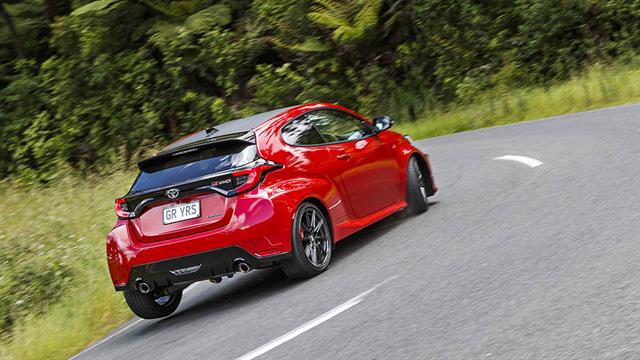
It loves punishment too. Some cars prefer a smooth approach to going fast, this likes it rough. You can pump it into the bends and when you think it’s about done, you learn to give it even more, and somewhat shockingly, it’ll tighten and go. The rear end is faithful too giving the chassis a neutral, exploitable balance in the bends. The Type R delivers more stability and ultimate grip; it’s wider, longer with more rubber, but this GR sticks like chewing gum to the bottom of your jandal.
The engine is a demon. It might only have three cylinders but it swings, racing all the way to seven thou and doesn’t stop slugging. It sounds manic too. The gear change, with its heavy, springy action, won’t be rushed. It needs a firm and precise hand as the gates just aren’t as greased as the Type R’s. The brakes have bite. Standing on them hard triggers the ABS all too easily, which sets the hazard lights off, but the Yaris doesn’t dive like most small cars do. You can really drive this thing hard and it loves it. As will you. It’d be nice if the seat could be lowered, but the Yaris packaging has its constraints. There’s more hard plastic inside and a lot less space. But it’s one helluva of a drive, if you can get one.
| Model | Ford Focus ST |
| Price | $59,490 |
| Engine | 2261cc, IL4, T/DI, 206kW/420Nm |
| Drivetrain | 7-speed auto, front-wheel drive |
| Fuel Use | 8.6L/100km |
| C02 Output | 198g/km |
| 0-100km/h | 5.44sec |
| Weight | 1501kg |
| Model | Honda Civic Type R |
| Price | $62,990 |
| Engine | 1996cc, IL4, T/DI, 228kW/400Nm |
| Drivetrain | 6-speed manual, front-wheel drive |
| Fuel Use | 8.8L/100km |
| C02 Output | 202g/km |
| 0-100km/h | 5.95sec |
| Weight | 1399kg |
| Model | Toyota GR Yaris |
| Price | $54,990 |
| Engine | 1618cc, IL3, T/DI, 200kW/370Nm |
| Drivetrain | 6-speed manual, all-wheel drive |
| Fuel Use | 7.6L/100km |
| C02 Output | 172g/km |
| 0-100km/h | 5.27sec |
| Weight | 1292kg |
